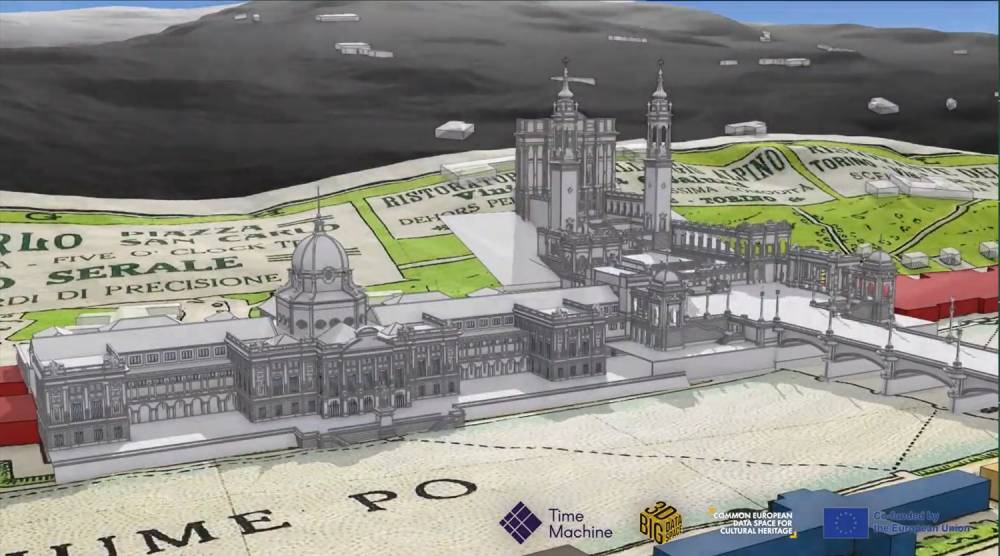News
October 20, 2025

By Alessandra Spreafico
Turin 1911 project is one of the two winners of the 3DBigDataSpace Data Synergy Call led by the Time Machine Organization (TMO).
On the 15th of October 2025, with a press realease the 3DBigDataSpace website announce the two winners: Portomarín, Spain - A submerged Village Brought Back as Data, and Turin, Italy — Reviving a World’s Fair in Digital Form.
With the aim of expanding 3D contents for Cultural Heritage available online, the 3DBigDataSpace will enhance practical availability of the digital data in a 18-months project. Launched in Februray 2025 and co-funded by the European Union (Digital Europe Programme), the 3DBigDataSpace will develop AI-powered pipelines to improve reusage, expand findability and contextualziation of digital assets, transforming the way we explore Cultural Heritage.
<Through the aggregation of over 50,000 3D models from various content providers and Europeana aggregators, the project establishes a stable, long-term and interoperable storage solution for 3D cultural content—including original 3D models, raw sensor data, and interactive viewer derivatives.>
The Data Synergy Grant is just one of the three grants planned within the 3DBigDataSpace grants scheduled for the next future for contributing to this big effort. Turin 1911 is one of the outstanding projects receiving support through the Data Synergy Grant and serving as data provider for the Common European Data Space for Cultural Heritage.
Since March 2024 Turin 1911 is part of the TMO as “Turin 1911 – The World’s Fair in Italy” Local Time Machine project. Local Time Machine projects constitute one of the TMO pillars to rebuild the past of many European cities.
Now, with the Data Synergy Grant, Turin 1911 makes a step forward in making its data available to a wider public. The proposed heritage includes still-existing architectures and now-lost exhibition structures from the 1911 World’s Fair.
The 1911 Exposition marked a major celebration of Italy's modernization, showcasing art, science, and industry in a grand architectural setting. While many structures were temporary, their historical documentation and 3D reconstruction preserve valuable insights into early 20th-century design and national identity expression.
None of the almost 200 buildings still stand, only the 3D digital reconstruction of some of them testify the grandiosity of this piece of history. Among the digital architectures are the Valentino Castle, the Borgo Medievale, the Fountian of the 12 months, and some exposition pavilions reconstructed from archival materials and already available in the Built Environment Objects section of the Turin 1911 website.
Thanks to the 3DBigDataSpace Data Synergy grant, a mix of raw data, document-based and reality-based 3D models of the Turin 1911 World's Fair will be published on the Common European Data Space for Cultural Heritage documented by proper metadata and paradata, contibuting to make data of the past more accessible and reusable.

